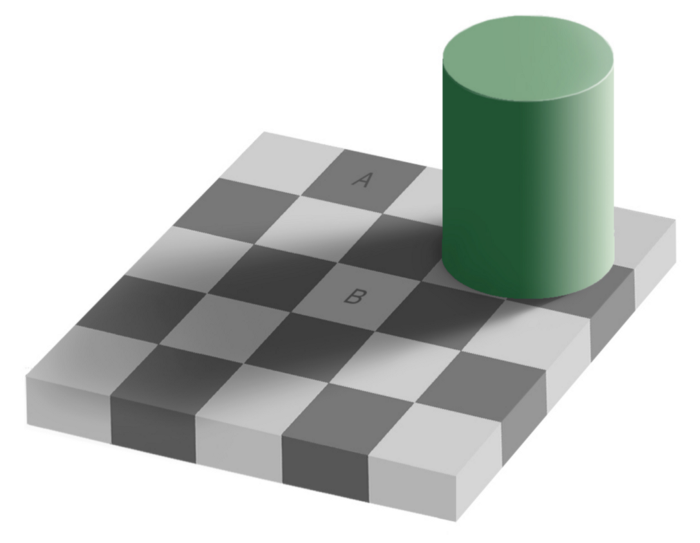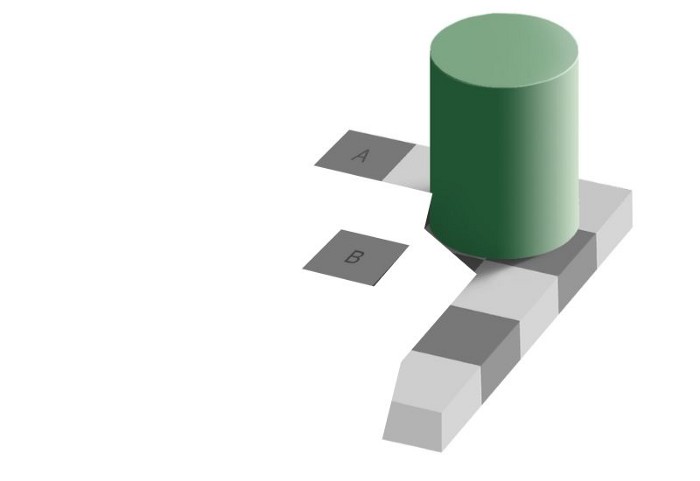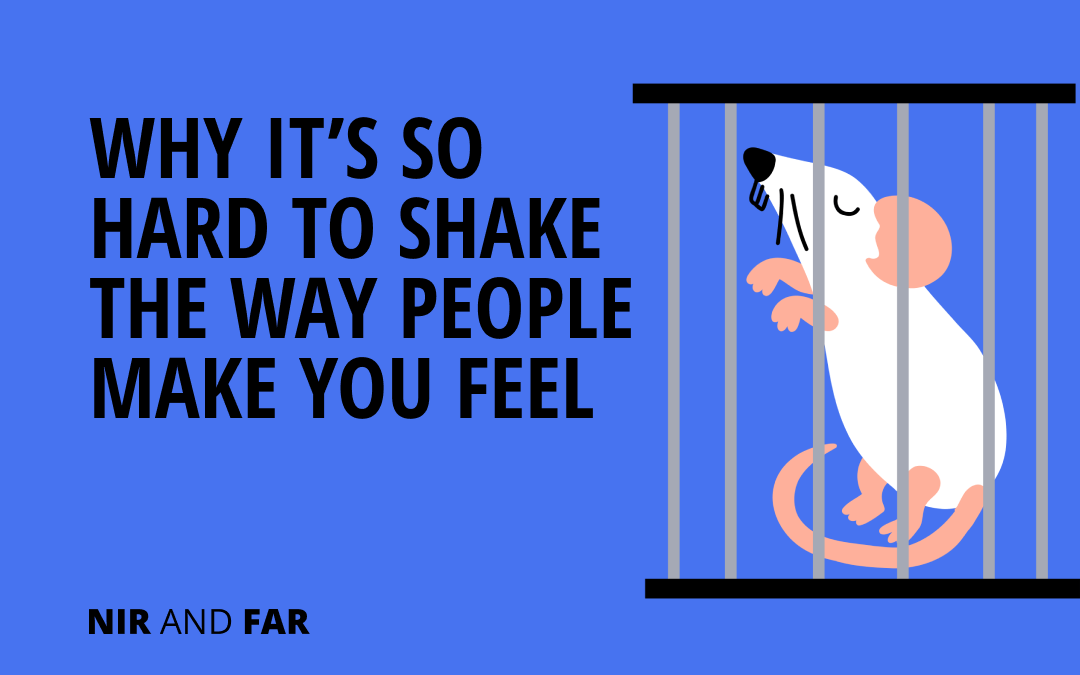In psychology, a “trapped prior” is a perception of reality that’s colored, or trapped, by past experiences.
If not treated, trapped priors can turn into debilitating phobias. For instance, someone might have an overwhelming fear of dogs because they were bitten as a child.
Though not nearly as extreme, our trapped priors can shape how we perceive others.
Have you ever known someone you just couldn’t stand, but didn’t really know why? Maybe it was some slight offense that turned you off to them and now you get uneasy every time they’re around.
There’s a well-known meme for this phenomenon. It’s known as the “bitch-eating-crackers effect.” No matter what that person does, it can’t be good. “Look at Veronica over there; look at how she’s eating those crackers… what a bitch!” Of course, Veronica is probably perfectly harmless, but still!
The reverse is also true. We oftentimes treat people who make us feel a certain way better than they deserve. Several studies have shown good-looking people get better service, make more money, and are more likely to succeed in their careers.
We treat people better or worse because of how they make us feel and our feelings are highly influenced by our priors.
Trapped priors exist because your perception of the world doesn’t start with a blank slate every time you open your eyes. Rather, perception is a process of organizing and interpreting incoming sensations. This process is heavily rooted in past experiences—patterns you’ve seen and mapped to what’s happening now.
The best way I’ve found to understand this is using an optical illusion. Take a look at the chessboard below, and notice how the square labeled “A” looks darker than “B”:


Everyone sees two shades of gray in that first image. We can’t help it. We see two shades because our brains don’t perceive the shades of gray simply as they are. We perceive instead a combination of patterns that we’ve seen before: the pattern of a chessboard, the pattern of light and shadow.
Our past experiences with these patterns make us see things not quite as they are, but as we expect them to be.
Now, back to real life. For some years after I reached adulthood, my trapped prior perceptions of my parents created friction between us. It felt to me like every time I visited my parents, I became a teenager again—and not in a good way.
Even though I was now independent, I’d get into dumb arguments with my parents just like I did when I was in high school. Why? There was no reason to argue about small differences of opinion. We were all adults.
After I had a child of my own, I grasped what was happening. My childhood experiences of my parents were coloring my adult reality. Even though I was grown up, whenever I was around my parents, part of me was still thinking about myself as a kid. A pattern or expectation from the past was causing me to see conflicts that weren’t really there.
It’s like the optical illusion: my view of the present was trapped by past experiences.
Releasing Your Trapped Priors
In relationships, it’s good to be able to let go of these trapped priors. It would be nice if we could treat our trapped prior perceptions of people the way we treated that optical illusion: wipe away the part of the picture that’s creating bias.
Getting rid of the “bitch-eating-crackers” variety of trapped priors is a bit less straightforward. However, it is possible to do something about it. If you take action, you can open up the path to forgiveness (or, at least, less bickering).
There are two things you can do to refresh trapped perceptions of people:
- See people differently. When I became a dad, I stopped seeing my parents as authority figures, and I started seeing them as humans. Just like me, they weren’t perfect. Just like me, they were doing their best. And like me, they wanted to let go of trivial disagreements. We often pigeonhole people into the roles they play in our lives, and judge them by the standard of “parent” or “boss.” But people have more dimensions than that, and you can build better relationships by looking at those other, different dimensions, not just the same ones we’re used to seeing.
- Give people the benefit of the doubt. I wrote previously that the benefit of the doubt is the secret to kindness, and I still believe this. Most people mean well most of the time. I try to assume positive intent not just for their sake, but for my own. It’s no fun to get into scuffles when there was never any ill intent in the first place.
By the way, the best thing about learning to release trapped priors is that you can also release your harmful perceptions about yourself. Many people miss out on the chance to be truly productive simply because at some point in the past, they decided they were incapable, or learning to be more productive just wouldn’t work for them.
In reality, each day is a chance to take ownership of your time and spend it the way you want. By letting go of past perceptions of what you can or can’t do, you’re treating yourself with kindness and giving yourself a better chance to thrive.
Related Articles
- Schedule Maker: a Google Sheet to Plan Your Week
- Habit Tracker Template in Google Sheets
- The Ultimate Core Values List: Your Guide to Personal Growth
- Timeboxing: Why It Works and How to Get Started in 2025
- An Illustrated Guide to the 4 Types of Liars
- Hyperbolic Discounting: Why You Make Terrible Life Choices
- Happiness Hack: This One Ritual Made Me Much Happier

